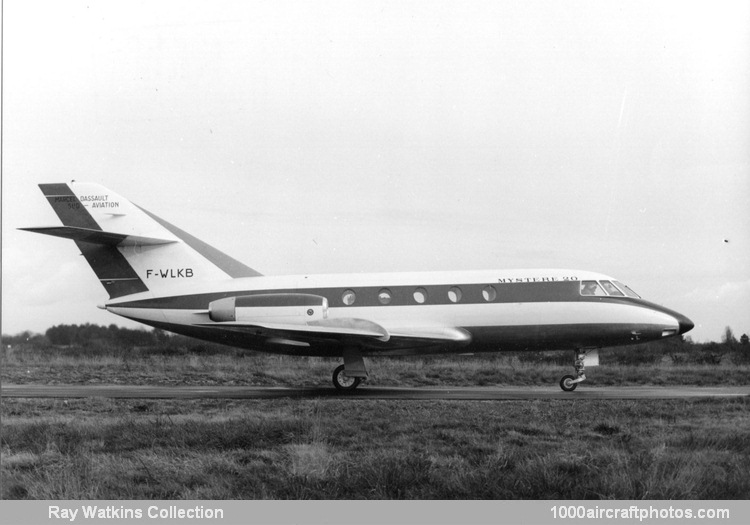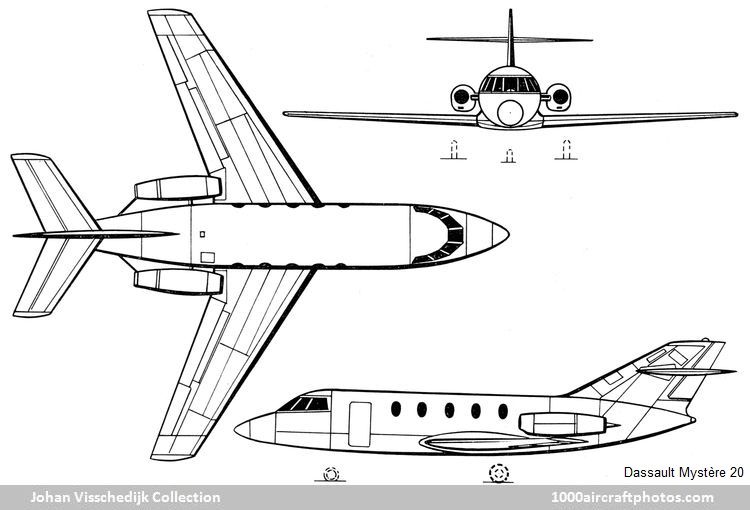11/15/2022. Remarks by Johan Visschedijk: "The pictured aircraft was the prototype of a light twin-jet executive transport developed jointly by Dassault and Sud Aviation. Construction began in January 1962, Sud Aviation building the wings and tail unit,the fuselage was built by Dassault, which also assembled the aircraft. Registered F-WLKB, the prototype was first flown by Rene Bigand from Bordeaux-Mérignac Airport on May 4, 1963. Initially fitted with two 3,300 lb (1,489 kg) Pratt & Whitney JT12A-8 turbojets (each fitted with SNECMA thrust-reversers st). It was re-engined subsequently with 4,200 lb (1,905 kg) General Electric CF700-2C turbofans, and flew for the first time with these engines on July 10, 1964. Other changes for production included an 18 in (45 cm) increase in cabin length, a 3 ft 3in (1.00 m) increase in span to reduce approach speed, and the use of twin wheels instead of single wheels on all three landing gear units.
The Fan Jet Falcon, as the production model was known by then, received French certification and US Transport Category Type Approval on June 9, 1965. On the following day, using the Mystère 20 prototype, Jacqueline Auriol established a Class C-1-g speed record of 534.075 mph (859.51 kmh) over a 621.37 mls (1,000 km) closed circuit. F-WLKB was featured in the American heist comedy movie How to Steal a Million, which was released in July 1966. In December 1967 F-WLKB was reregistered F-BLKB. It was preserved at Bordeaux-Mérignac in May 1983, in 1995 it was transferred to the Musée de l'Air et de l'Espace at Le Bourget, near Paris, where it still resides.
Read the type remarks on page 9821.

